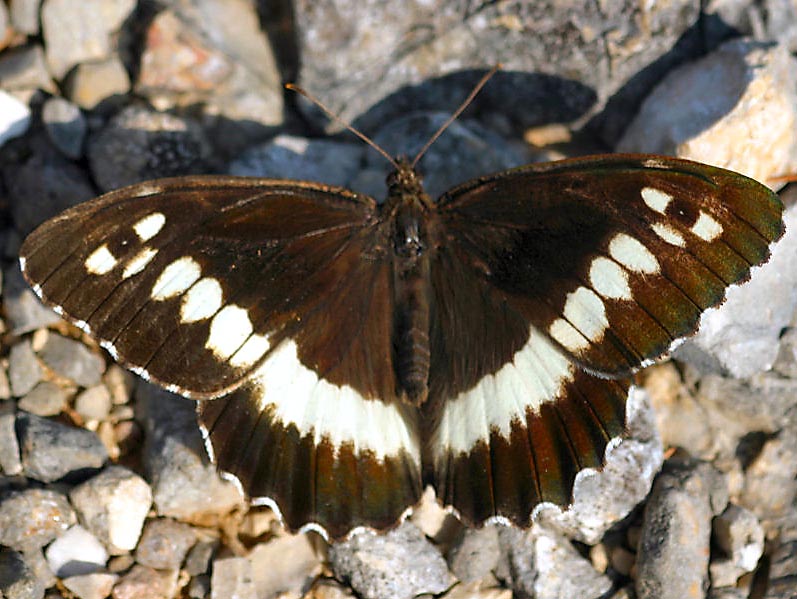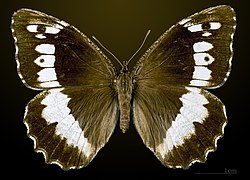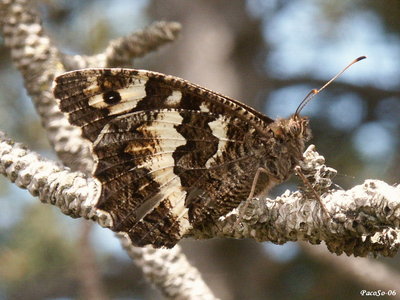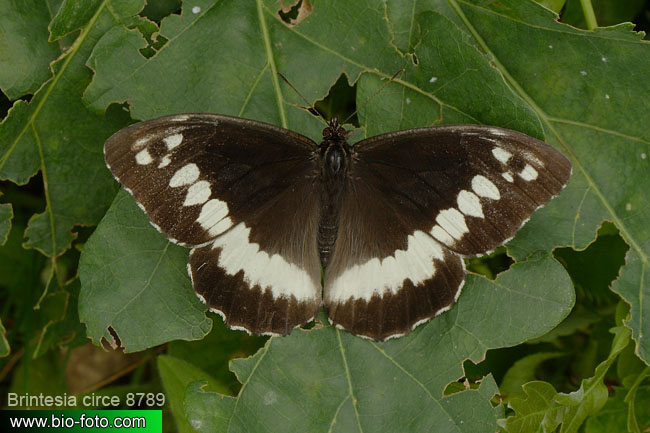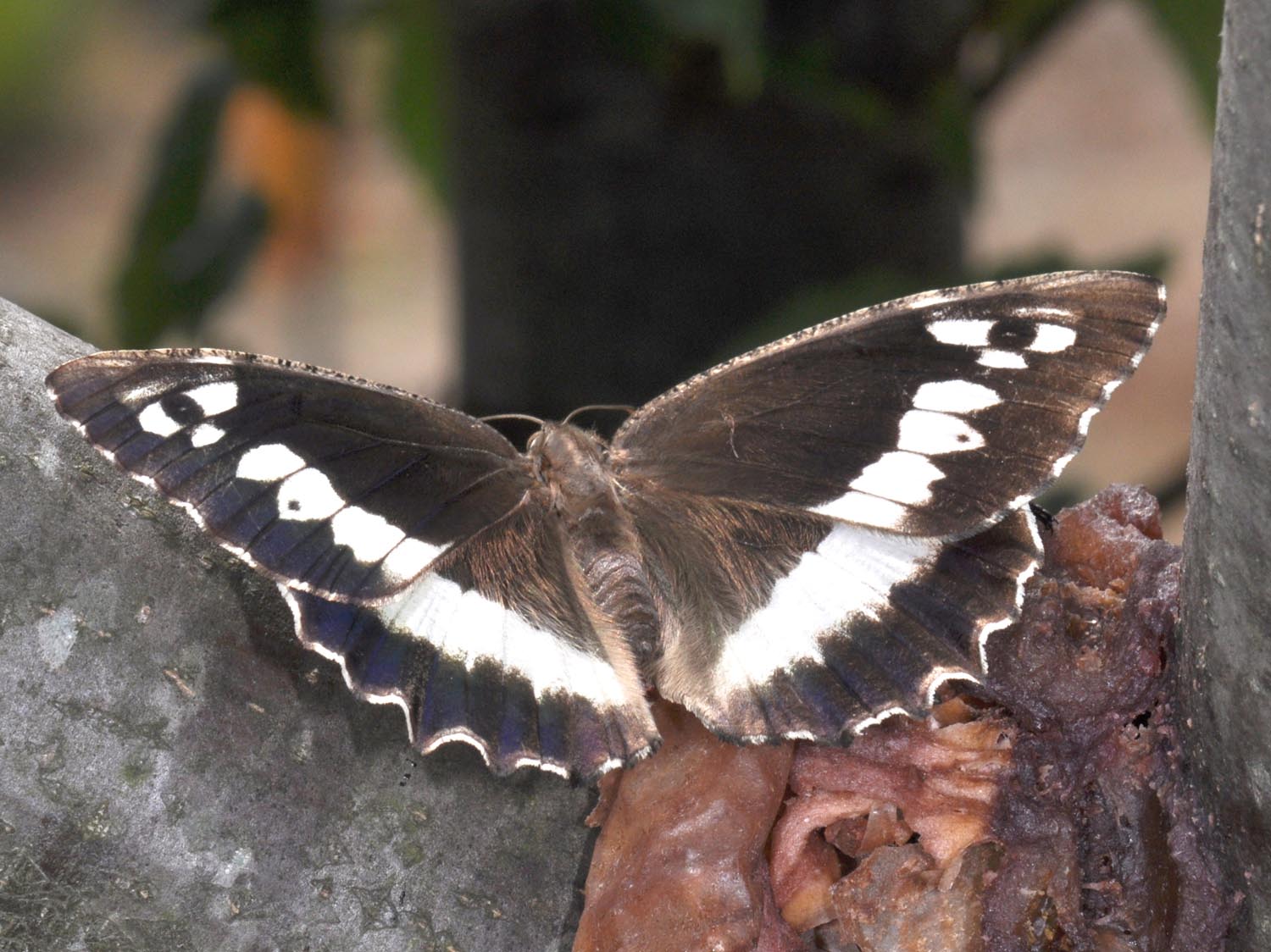Brintesia circe
White Grayling ( Aulocera circe )
The White Grayling ( Aulocera circe ) is a butterfly ( butterfly ) of the family Nymphalidae ( Nymphalidae ).
- 3.1 food of the caterpillars
- 6.1 Notes and references
- 6.2 Literature
Features
The moths reach a wingspan of 55 to 65 millimeters. They have very dark brown-colored upper wing on which a conspicuous, broad white transverse fascia, which is divided into individual spots on the wing outer edge. On the dark gray-brown underside of the hind wing broad, whitish binding can also be seen. But it is colored somewhat dull. In addition a weakly indicated second binding near the wing root, what this type of the Great Grayling ( Hipparchia fagi ) differs significantly. However, they only reaches the wing center. On the underside of the forewing a great Bled white spot with a black dot in the middle is placed near the top.
The caterpillars are about 35 mm long and are colored light gray-brown. They have a dark gray dorsal stripe and next to several weak side stripes. The head capsule is strikingly patterned with six gray-brown stripes.
Similar Species
- Great Grayling ( Hipparchia fagi )
- Small forest porter ( Hipparchia alcyone )
Synonyms
- Brintesia circe
- Kanetisa circe
- Satyrus circe
Way of life
The moths fly in one generation a year from early June to mid-September. They can often be seen on flowers in contrast to the Great Forest porter.
Development
The females shed their eggs during the flight to the ground. The caterpillars then they look for a suitable food plant. They overwinter adolescent and pupate in the next year in a chamber under the ground.
Food of the caterpillars
The caterpillars feed on the leaves of Upright Brome ( Bromus erectus ) and Genuine sheep fescue ( Festuca ovina ). In addition, they are also found on other grasses.
Occurrence
The animals come in Southern and Central Europe, Turkey, Iran and the Himalayas before up to a height of 1,650 meters. They are common especially in the Mediterranean area, in the warm areas of southern Germany they are very rare occurring. They are found particularly on dry grass close to forests.
Threats and conservation
The White Grayling has become rare or extinct in many areas. Measures for the conservation of the species are difficult because the species is neither completely free Magerrasen or heathland still heavily populated areas verbuschte.
- Red List FRG: 2 ( endangered )
- Red List of Baden- Württemberg: 2 ( endangered )


